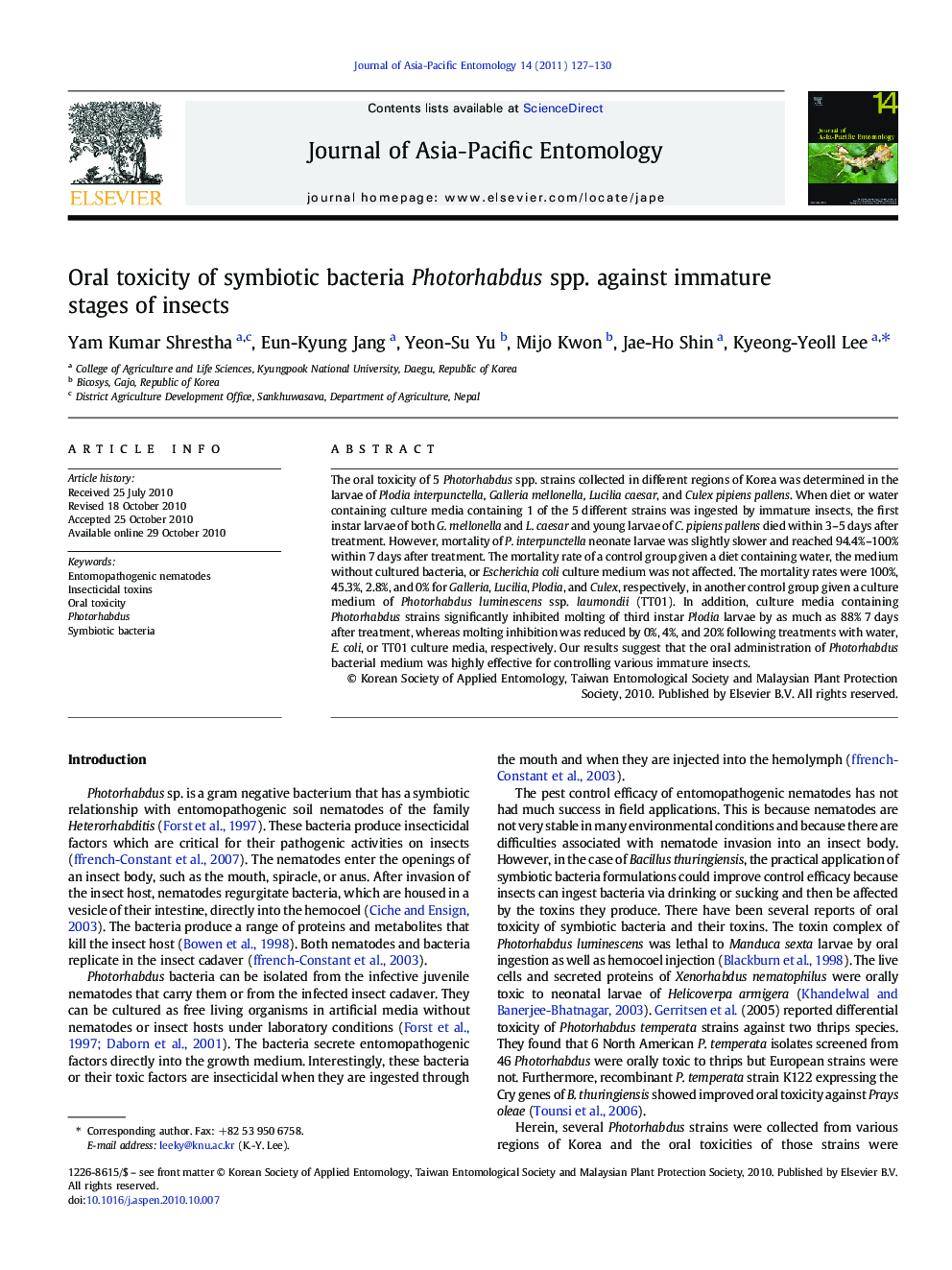| Article ID | Journal | Published Year | Pages | File Type |
|---|---|---|---|---|
| 4524864 | Journal of Asia-Pacific Entomology | 2011 | 4 Pages |
The oral toxicity of 5 Photorhabdus spp. strains collected in different regions of Korea was determined in the larvae of Plodia interpunctella, Galleria mellonella, Lucilia caesar, and Culex pipiens pallens. When diet or water containing culture media containing 1 of the 5 different strains was ingested by immature insects, the first instar larvae of both G. mellonella and L. caesar and young larvae of C. pipiens pallens died within 3–5 days after treatment. However, mortality of P. interpunctella neonate larvae was slightly slower and reached 94.4%–100% within 7 days after treatment. The mortality rate of a control group given a diet containing water, the medium without cultured bacteria, or Escherichia coli culture medium was not affected. The mortality rates were 100%, 45.3%, 2.8%, and 0% for Galleria, Lucilia, Plodia, and Culex, respectively, in another control group given a culture medium of Photorhabdus luminescens ssp. laumondii (TT01). In addition, culture media containing Photorhabdus strains significantly inhibited molting of third instar Plodia larvae by as much as 88% 7 days after treatment, whereas molting inhibition was reduced by 0%, 4%, and 20% following treatments with water, E. coli, or TT01 culture media, respectively. Our results suggest that the oral administration of Photorhabdus bacterial medium was highly effective for controlling various immature insects.
Graphical AbstractThe Ag2O catalyzed selective oxidation of hydroquinones to benzoquinoneswith aq. 30% H2O2 can be efficiently performed underbatch and continuous-flow conditions.Figure optionsDownload full-size imageDownload as PowerPoint slide
